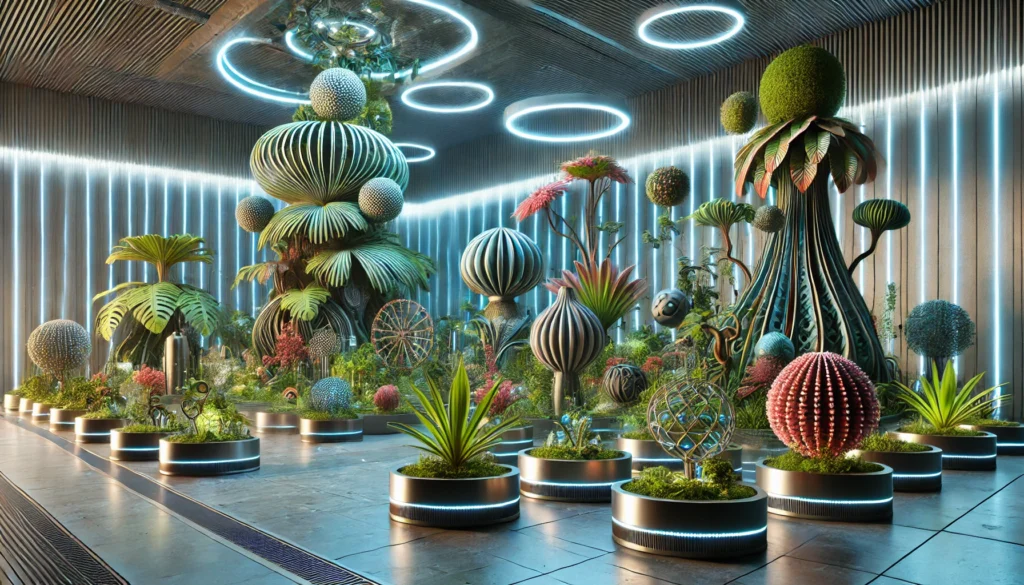In recent years, the boundaries between science fiction and reality have blurred, influencing various aspects of our lives, including gardening. Sci-fi gardening and futuristic plants are no longer just concepts from movies and novels. From genetically modified species to innovative gardening technologies, these ideas are reshaping how we perceive greenery in urban and residential spaces. Whether you’re a sci-fi enthusiast or a gardener interested in cutting-edge trends, this guide will explore how futuristic plants and sci-fi gardening could become part of everyday life.
1. What is Sci-Fi Gardening?
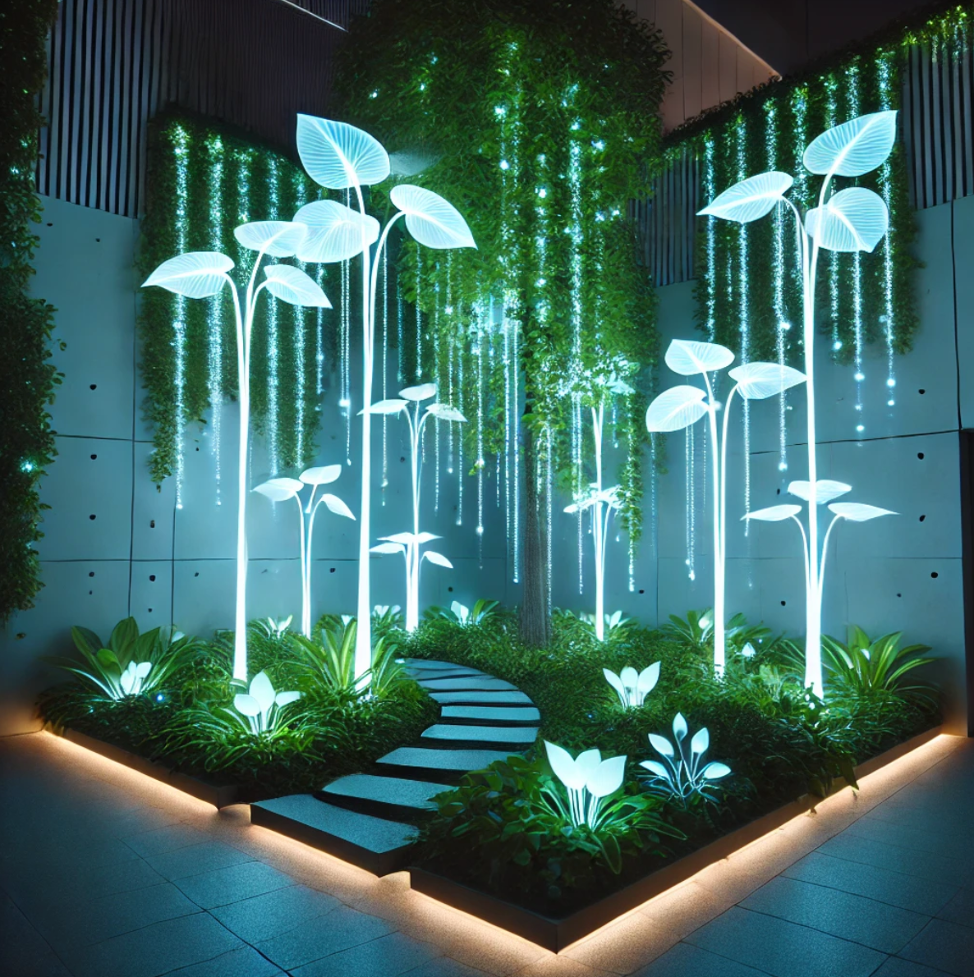
Sci-fi gardening refers to the integration of advanced technologies, new plant species, and innovative designs that mimic or enhance natural processes. It envisions a future where plants are not just aesthetic or practical but also engineered for various functions, like purifying the air, producing food more efficiently, or even lighting up your garden at night. The evolution of bioengineering, vertical farming, and smart garden devices is making such futuristic visions more realistic.
The Influence of Science Fiction
Science fiction, from classic works like The Day of the Triffids to modern films like The Martian, has inspired concepts of futuristic agriculture and gardening. Sci-fi gardening leans heavily on these ideas by exploring themes like colonizing other planets with plant life, cultivating crops in harsh conditions, or growing plants that can adapt to environments we consider uninhabitable today.
2. Futuristic Plants: Bioengineered Wonders
One of the most exciting aspects of sci-fi gardening is the introduction of futuristic plants. These plants are often bioengineered to exhibit traits that go beyond what nature intended. Some examples include:
1. Bioluminescent Plants
Imagine walking through a garden that glows in the dark without any artificial lights. Bioluminescent plants, which have been genetically modified to emit light, are already in development. These plants could serve as eco-friendly garden lighting solutions and enhance nighttime outdoor spaces without increasing electricity consumption.
2. Hyper-Efficient Crops
Another area of innovation is bioengineering crops that can grow faster, withstand extreme weather conditions, or even produce more nutrients. These futuristic plants could help address food shortages, especially in regions facing climate change challenges. Indoor farming with stacked vertical gardens can also support this idea, growing crops in confined urban environments without soil or traditional farming techniques.
3. Pollution-Absorbing Plants
Some futuristic plants are being designed to absorb more pollutants than their natural counterparts. These plants could act as living air purifiers, making them ideal for urban areas where pollution is a growing concern. They can filter out harmful particles from the atmosphere while simultaneously releasing more oxygen.
4. Solar-Energy Producing Plants
What if plants could harness solar energy not just for themselves but for us too? Researchers are exploring ways to create hybrid plants that can convert sunlight into usable energy. These plants might one day power small devices, adding another layer of functionality to your garden.
3. Technological Innovations in Sci-Fi Gardening
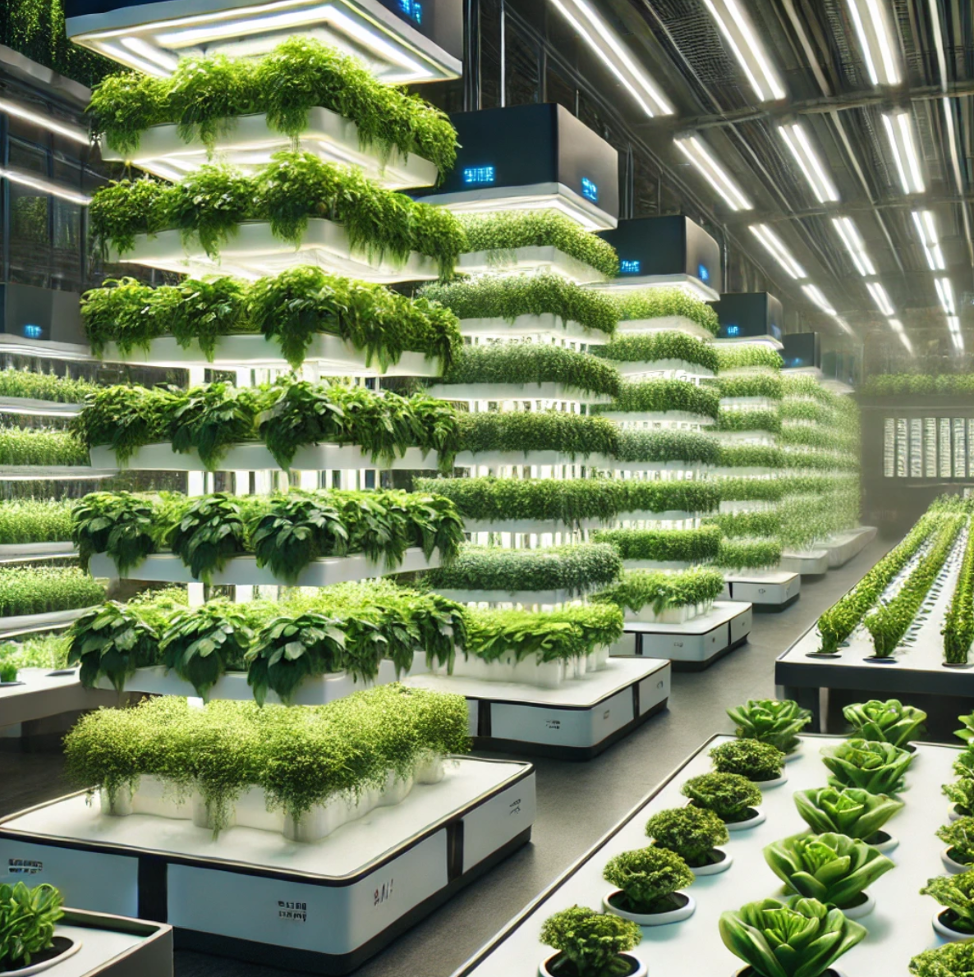
Aside from futuristic plants, sci-fi gardening incorporates advanced technologies that make cultivating a garden more efficient and sustainable. Here are a few key developments:
1. Robotic Gardeners
Imagine having robots that automatically plant, water, and care for your garden. These autonomous machines can monitor soil health, detect diseases, and manage plant care without human intervention. Companies are already developing AI-powered gardening tools that make gardening easier and more productive.
2. Smart Gardens
Smart gardens are small, automated systems that monitor plant health, water usage, and even the quality of sunlight. With sensors connected to apps on your phone, you can receive notifications when a plant needs water or fertilizer, making gardening virtually hands-free.
3. Vertical and Hydroponic Gardens
In space-conscious urban areas, vertical gardens and hydroponic systems are becoming increasingly popular. These systems allow plants to grow without soil, using nutrient-rich water instead. This method reduces water consumption, speeds up plant growth, and can be used indoors year-round, creating a futuristic garden environment even in small spaces.
4. Mars and Space Gardening
One of the most ambitious ideas in sci-fi gardening is the concept of growing plants on other planets. With NASA and private space companies exploring the possibilities of Mars colonization, scientists are studying how plants might grow in extraterrestrial environments. Research in this area has already led to breakthroughs in hydroponics and bioengineering, which could have significant implications for future gardening techniques here on Earth.
4. Designing Your Own Sci-Fi Garden
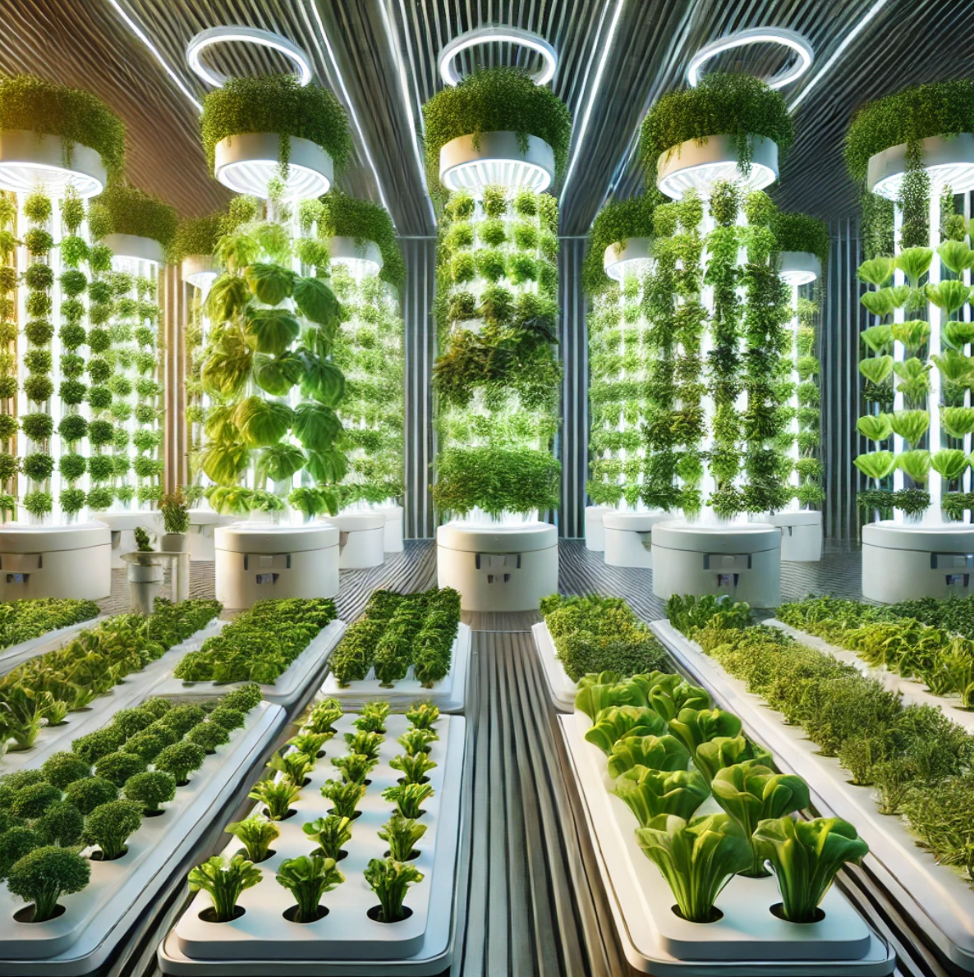
Creating a futuristic or sci-fi-inspired garden doesn’t require a lab or advanced technology. You can incorporate some of the ideas from this new wave of gardening into your home by focusing on design, plant selection, and smart tech integration.
1. Minimalist, Futuristic Aesthetics
Sci-fi gardens often incorporate minimalist, geometric designs. Raised beds, vertical planters, and clean lines are typical features. Metal, glass, and LED lighting can add to the futuristic look, giving your garden a space-age feel.
2. Choose Unique, Uncommon Plants
Plants with unusual shapes or textures, like succulents or cacti, are excellent choices for a futuristic garden. Consider adding bioluminescent plants if they become available, or opt for other exotic varieties that give off a sci-fi vibe.
3. Smart Irrigation Systems
Install a smart irrigation system to reduce water waste. These systems can be programmed to water plants based on weather forecasts, ensuring your plants get the right amount of hydration without human intervention.
4. Tech-Inspired Décor
Incorporate tech-inspired garden decor such as solar-powered garden lights, automated water fountains, or even robotic plant caretakers. These elements can enhance the futuristic feel of your garden and make maintenance easier.
5. The Future of Gardening: A Blend of Nature and Technology
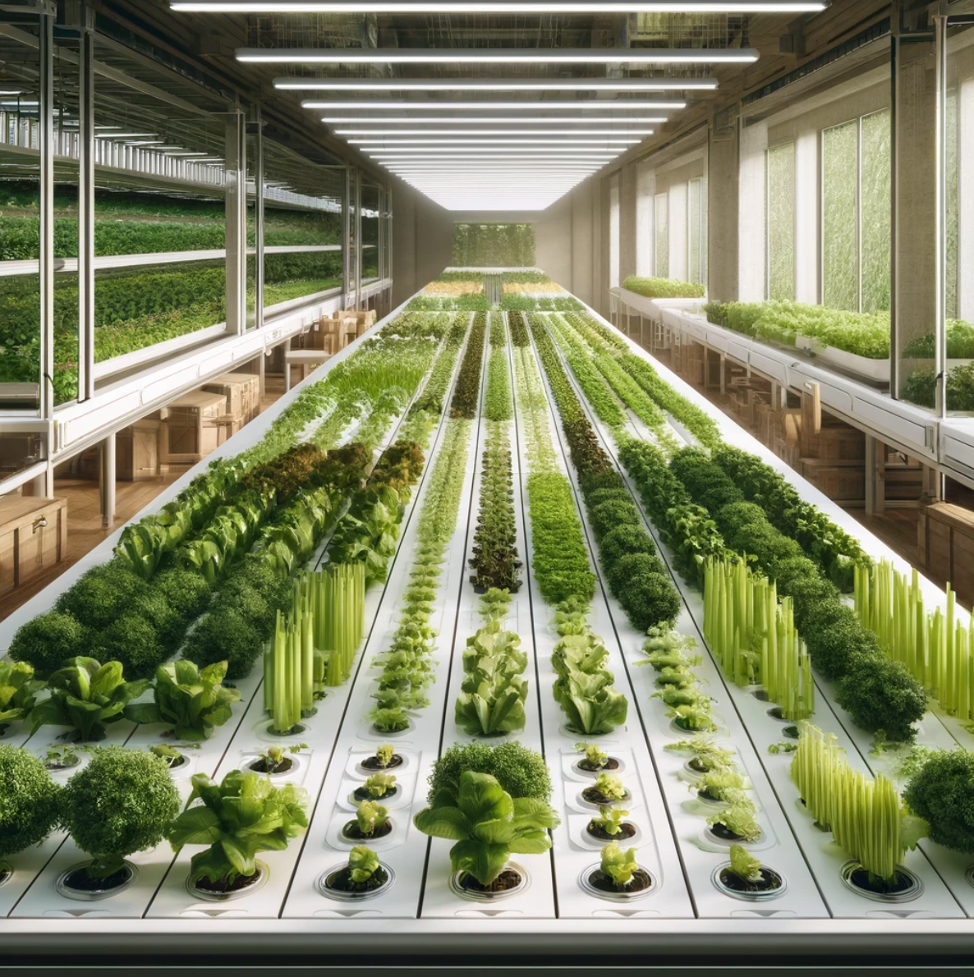
As the line between nature and technology continues to blur, gardening is becoming a frontier for innovation. Sci-fi gardening is no longer a mere fantasy but a glimpse into the future where plants and technology coexist, improving both our environments and our quality of life.
Whether through bioengineered plants that can purify the air or robotic assistants that tend to your plants, the future of gardening holds endless possibilities. As we venture into new realms of horticulture, we may soon see gardens that resemble the imaginative worlds of science fiction becoming a reality in our own backyards.

